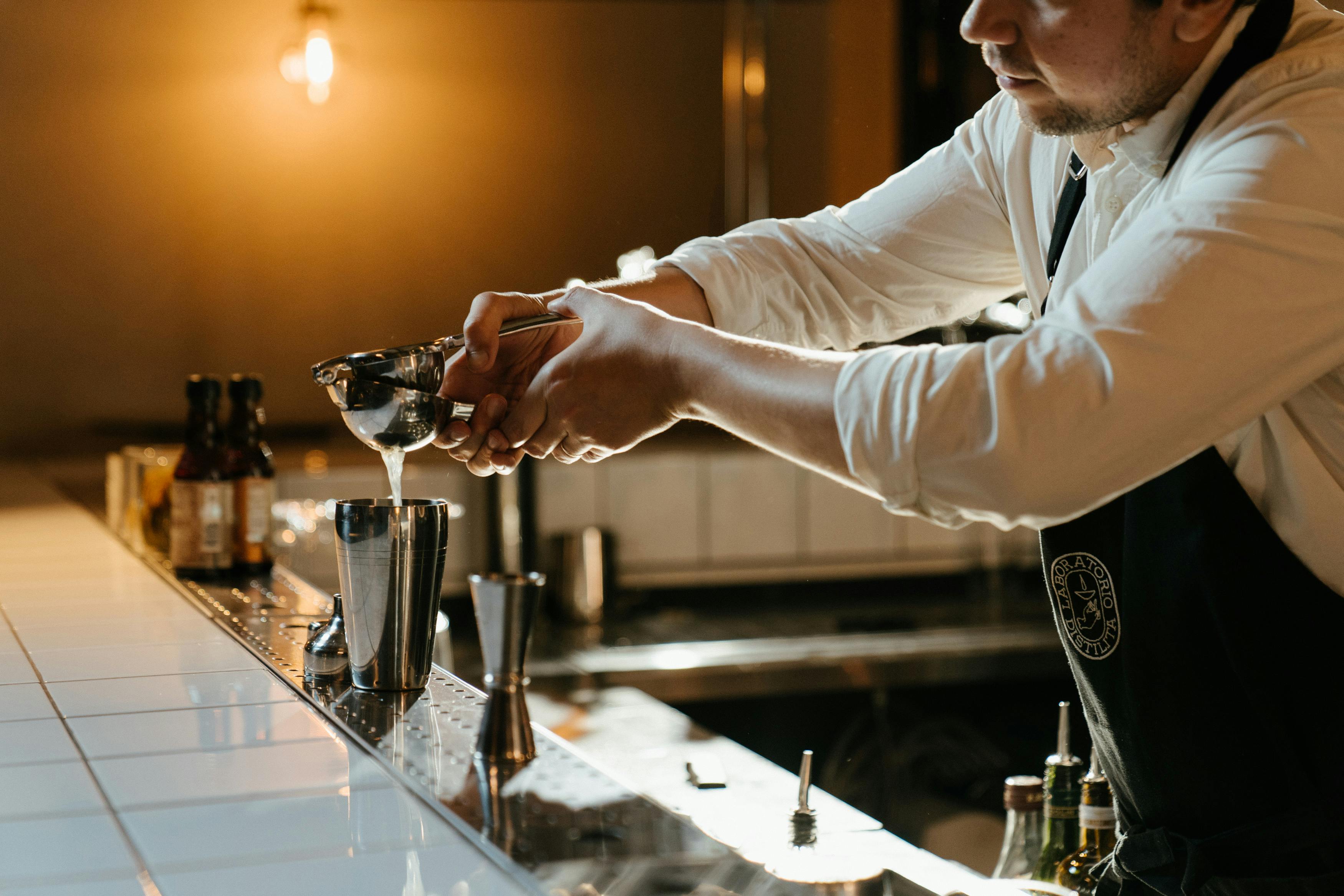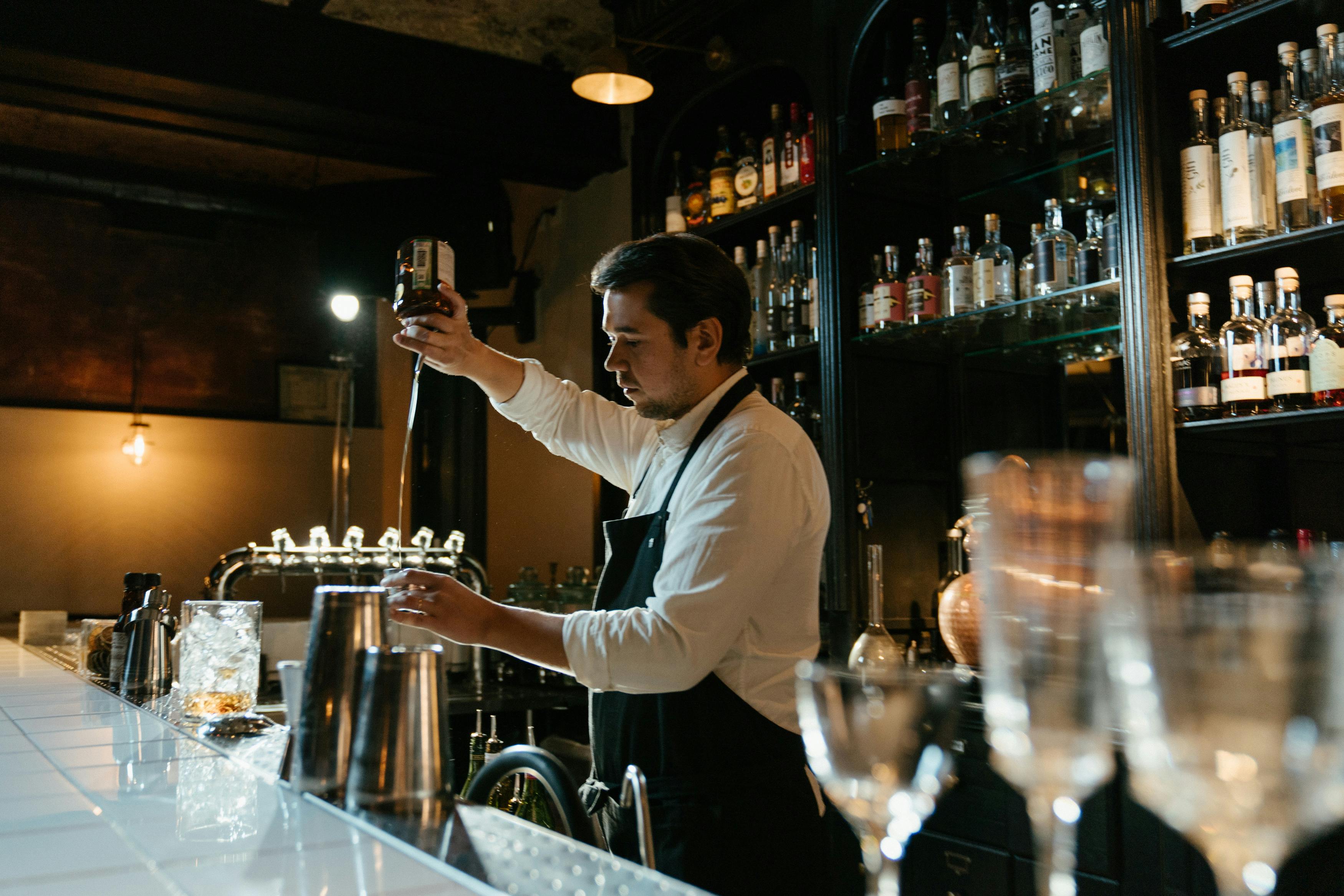Distillation is the process of separating two or more liquids with different boiling points by heating them to their respective boiling points and then collecting the vapors that are produced. This process is commonly used to create alcoholic beverages, such as beer, whiskey, and vodka. The distillation process for alcohol involves boiling a fermented liquid mixture, such as a mash from grain or fruit, and then collecting the vapors produced during the boiling process. These vapors contain various levels of alcohol and are then collected in separate containers. The liquid collected from each container can be blended together to create an alcoholic beverage with a desired level of alcohol content.Distillation is a process of separating the components or substances from a liquid mixture by using selective boiling and condensation. Distillation allows the separation of a liquid mixture by selectively boiling components and then condensing the vapors to separate them. This process is often used to purify liquids or separate mixtures of two or more liquids with different boiling points.
How Does Distilling Alcohol Work?
Distilling alcohol involves heating a liquid to the point that it vaporizes, then cooling the vapor so that it condenses back into a liquid. This process is known as fractional distillation. The vaporized liquid, which contains alcohol, is then collected and cooled to create an alcoholic beverage.
The first step in distilling alcohol is to create a fermented liquid containing ethanol. This can be done by adding yeast and sugar to grains such as barley or wheat, or by adding yeast and sugar to fruits or vegetables such as grapes, apples, or potatoes. The mixture is left to ferment for several days until the yeast has converted the sugars into ethanol.
Once the fermented liquid has been created, it is heated in a still. A still is a device that consists of two vessels connected by a pipe. As the fermented liquid is heated, the alcohol evaporates and rises up through the pipe into the second vessel. The second vessel has a condenser attached to it which cools down the vaporized alcohol so that it liquefies again and can be collected in another container.
The distillation process can be repeated
Types of Distillation
Distillation is a process used to separate and purify liquids. It involves boiling the liquid, collecting the vapors, and then condensing them back into liquid form. There are several different types of distillation that can be used depending on the desired results.
Fractional Distillation
Fractional distillation is the most common type of distillation and is used to separate mixtures of liquids with different boiling points. This process involves heating the mixture until it boils and then collecting the vapors in a fractionating column. The different components in the mixture rise through the column at different rates, allowing them to be separated from one another.
Vacuum Distillation
Vacuum distillation is similar to fractional distillation, but it uses a vacuum to reduce the boiling point of the liquid mixture so that it can be distilled at lower temperatures. This type of distillation is often used when heat-sensitive materials need to be separated because it reduces their exposure to high temperatures.
Steam Distillation
The History of Distilling Alcohol
Distilling alcohol has been practiced for centuries, with evidence of its use dating back as far as the 8th century AD. It was first used in alchemy and medicine, and its use spread across Europe during the Middle Ages. By the 16th century, distillation was being used to produce spirits such as gin, whisky, and brandy. The process of distillation involves heating a liquid to separate it into its component parts, including alcohol. This is done by boiling the liquid and collecting the vapors that are released. The vapors are then condensed back into liquid form, creating an alcoholic beverage with a higher alcohol content than what was originally present in the liquid.
In the 17th century, distillation became more widespread as new technologies were developed that made it easier to produce distilled spirits in larger quantities. These technologies included more efficient stills and better filtration systems that allowed for better control over the distillation process. By this time, distilled spirits had become popular in many parts of Europe and were exported to other countries around the world.
In addition to being used for beverages, distilled alcohol was also used for medicinal purposes
Components of a Distillation System
A distillation system consists of several components that work together to separate a mixture into its component parts. The main components of a distillation system include the still, the condenser, the reboiler, and the vapor-liquid separator. Each of these components plays an important role in the distillation process.
The still is a large vessel that holds the mixture to be separated. It is heated to create vapor from some of the liquid components in the mixture. This vapor is then directed into the condenser, where it is cooled and turned back into liquid form.
The condenser is an important part of a distillation system because it cools and condenses the vapor back into liquid form. This liquid then flows out of the condenser and into either a reboiler or a vapor-liquid separator.
The reboiler is used to heat some of the liquid that has been collected from the condenser so that it can be turned back into a vapor form. This vapor can then be

Fermentation
The first step in the alcohol distillation process is fermentation, which occurs when yeast or bacteria interact with sugars from fruit, grain, or other sources. During this process, the yeast and bacteria convert these sugars into ethanol and carbon dioxide. This ethanol is what will eventually become the alcoholic beverage. It is important to note that fermentation does not create a pure form of ethanol; rather it creates a mixture of ethanol and water.
Distillation
The second step in the alcohol distillation process is distillation. In this step, the fermented liquid is heated and then cooled repeatedly in order to separate out the ethanol from other components. This is done by taking advantage of the different boiling points of water (100 degrees Celsius) and ethanol (78.5 degrees Celsius). As the mixture is heated, the ethanol evaporates off first since it has a lower boiling point than water. This vapor is then cooled and condensed back into a liquid form, resulting in pure ethanol.
Aging
After distillation, many alcoholic beverages go through
Health Benefits
Distilling alcohol can provide a number of health benefits. The process of distilling alcohol removes impurities and toxins, resulting in a purer form of the beverage. This makes it safer to consume than the unprocessed version. In addition, the distillation process helps to preserve the flavor of the alcohol, making it more enjoyable to drink than its raw form. Finally, distilling alcohol can also help reduce hangovers, since the impurities that lead to them are removed during the process.
Increased Alcohol Content
Distilling alcohol also results in an increased alcoholic content compared to its raw form. This makes it easier for individuals to get a higher dose of alcohol in a single serving without having to drink as much volume. For those who are looking for a stronger alcoholic beverage or simply wish to enjoy greater effects from their drinks, distillation can be a great option.
Cost Savings
Distilling alcohol can also help save money over time. Since the impurities are removed during the process, less of the beverage has to be consumed in order
Drawbacks of Distilling Alcohol
Distilling alcohol can be a dangerous and complex process, and as such there are a number of drawbacks to consider before embarking on the distillation journey. The most obvious drawback is that it is illegal in many countries, so before attempting to distill alcohol, you should check your local laws and regulations. Additionally, the process requires specialized equipment and supplies, which can be expensive to purchase or construct. Furthermore, if not done properly, it can put you at risk of producing toxic or hazardous substances.
Another major drawback is that home-distilled alcohol is often of lower quality than commercial products available in stores and bars. It also takes considerable time to complete the distillation process, which can be discouraging for those who are looking for quick results. Finally, it is important to note that the amount of alcohol produced by home-distillation processes is often much lower than the amount produced commercially.

Conclusion
The distillation process for alcohol is an incredibly efficient and effective way to produce high-quality alcoholic beverages. It is a centuries-old process that has been perfected over time. This process involves the boiling of a liquid, the condensation of the vapor, and the collection of the liquid. The distillate is then aged, blended, and bottled to create the desired product. The quality and flavor of the final product is heavily dependent on the level of skill employed by those involved in each step of the distillation process.
Overall, distillation is a simple yet highly effective way to produce a wide range of alcoholic beverages that can be enjoyed around the world. By taking advantage of this method, producers can create high-quality drinks with precision and consistency. Thanks to advances in technology, it has become easier than ever for consumers to find spirits that have been distilled with great care and attention to detail.
In conclusion, distillation is an ancient technique that has been used for centuries to create some of the most popular alcoholic beverages available today. With careful execution of each stage in this process, producers can craft spirits with amazing flavor profiles and textures that will

